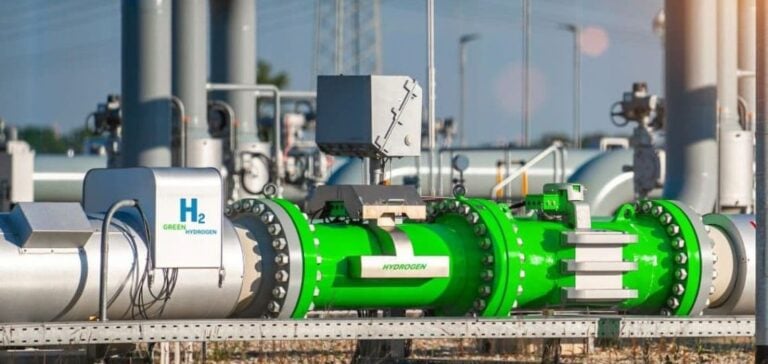The Spanish government’s approval to start work on the H2Med project marks a crucial step in Europe’s energy transition.
This pipeline, linking Barcelona to Marseille, aims to supply Northern Europe with green hydrogen by 2030, produced mainly on the Iberian Peninsula.
Enagas, Spain’s gas network operator, has been officially appointed to oversee the construction, commissioning, monitoring and maintenance of the infrastructure associated with the H2Med project.
This decision, taken by the Council of Ministers, includes the creation of an interconnection between Spain and Portugal, as well as between Spain and France, known as “BarMar” (Barcelona-Marseille).
Enagas’ role in the H2Med Project
Arturo Gonzalo, Managing Director of Enagas, expressed his enthusiasm at this breakthrough, stating that the project is crucial to Europe’s energy future.
According to Gonzalo, H2Med will become the backbone of Europe’s hydrogen industry, essential for strengthening the European Union’s industrial competitiveness, decarbonization and strategic autonomy. The H2Med project has been strongly supported by Madrid and Berlin, who see in it a solution for transporting green hydrogen, produced from renewable electricity, to northern European countries.
This initiative is the successor to the MidCat project, which was abandoned due to its lack of economic interest and environmental opposition.
H2Med Project Objectives and Challenges
Declared a “project of common interest” by Brussels in April, H2Med is expected to transport around 10% of the hydrogen consumed in Europe by 2030, or some two million tonnes a year.
The aim is to facilitate the decarbonization of European industry, by offering clean energy produced on a large scale in Spain and Portugal, thanks to wind and photovoltaic farms.
However, the project must overcome significant technical challenges.
Hydrogen, which is made up of small, aggressive molecules, is difficult to transport, which could jeopardize the project’s ability to meet deadlines.
Experts emphasize the need for technological innovation to guarantee the safe and efficient transport of this energy.
Future Prospects for Green Hydrogen in Europe
Despite the challenges, H2Med represents a significant step towards a low-carbon Europe.
By promoting the use of green hydrogen, this project could transform Europe’s energy landscape, reducing dependence on fossil fuels and strengthening the EU’s energy autonomy.
The collaboration between the Iberian countries and Germany illustrates Europe’s commitment to leading the energy transition.
In the long term, H2Med could inspire other similar projects, consolidating the EU’s position as a world leader in green energy.
Madrid’s green light for the H2Med project is a major step forward for green hydrogen in Europe.
With continued investment and technological innovation, Europe could achieve its decarbonization objectives, offering a model of sustainable energy transition for the rest of the world.






















